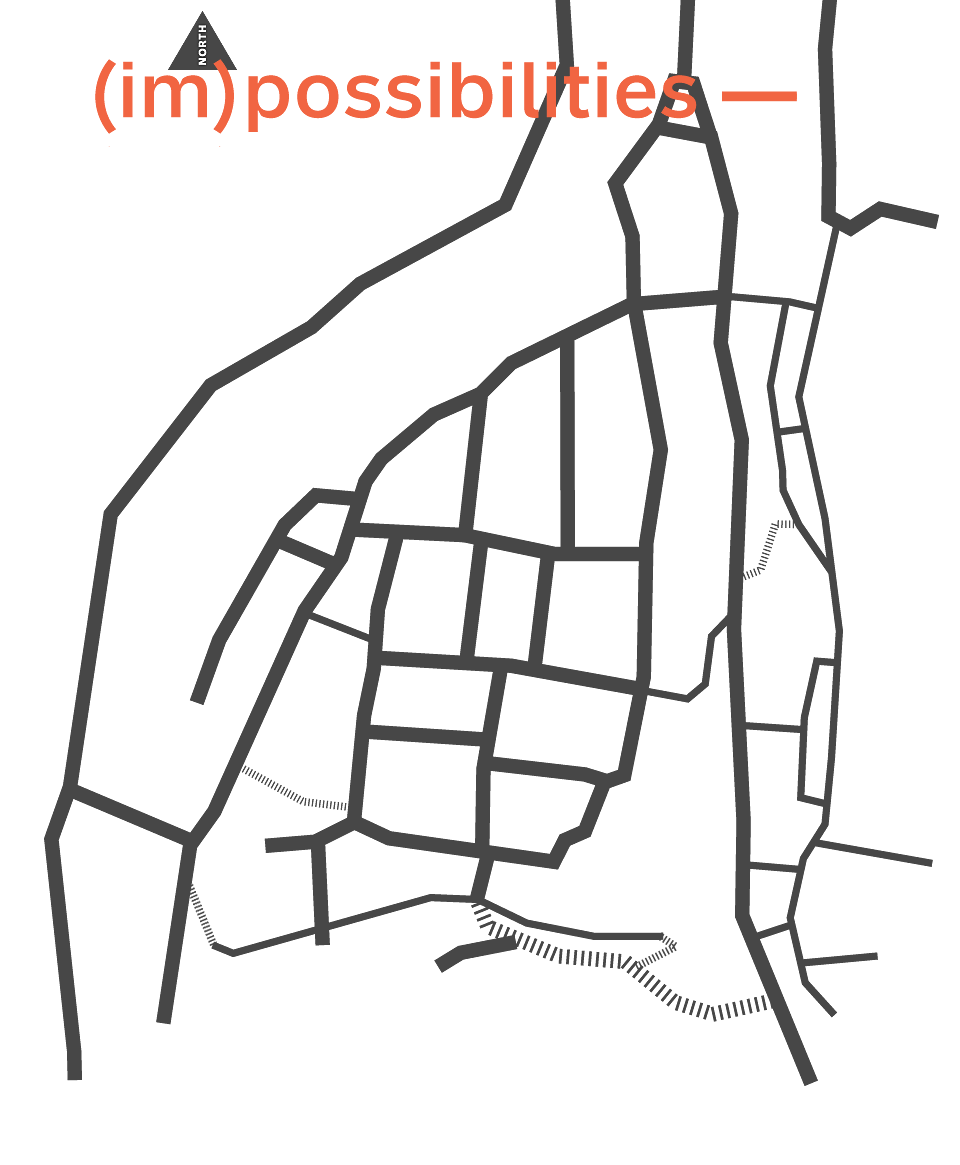(im)possibilities
If there is in us a germ of great disease, oversensitivity, the source of our incurable and uncontemporary Hamletisms is in the fatal bizarreness of that place …
A.G. Matoš about Upper Town, 1905, At Home
On the hundredth anniversary of Matoš’s location of our Hamletisms in Upper Town, the Government of the Republic of Croatia passed a law prohibiting public gathering of St. Mark’s Square, achieving in that way a double castration of Upper Town urban space: on the urbanistic-architectural level, the function of a square was replaced by the function of an inner courtyard of a city palace, and on the social-political level the foundations of democracy themselves were brought into question. Like a rash on the skin of a sick body, over 50 surveillance cameras are the contemporary symptom of fatal bizarreness.[1]
Accepting that we are powerless in solving the problem of Upper Town – by moving the Government and the Parliament – we decided to put the “no” into brackets and rethink how artistic and cultural practices can work in the existing situation, in a space of with daily[2] prohibitions, the source of whose contradictions[3] is difficult to locate.
As opposed to optimism of Mogućnosti ’71 (Possibilities ’71)[4], we chose ambivalence: it stems from the concrete work on the festival and the context of time and place. This year’s program is at the same time a result of successful cooperations, realizations of ideas, making changes and opening closed doors, as well as the impossibility of communication, giving up, changing of original ideas and fruitless attempts. All of the Festival’s projects are tied to specific places, reacting to their problematic functions. A part of them starts from the impossibility of a place to function according to the needs and rights of citizens, searching for brackets for the negative prefix in actions/installations which introduce new ways of using space, and a part of them boldly starts with an assumption about the possibility of action, suggesting scenarios for direct, sometimes provocative, confrontation with the surveillance system. Their “no” is present latently, as a potential result of the performance itself and the reactions of the audience and the public.
Instead of the fruitless Hamletisms, we accept the ambivalence of (im)possibility and base concrete action on the tension it generates.
[1] Upper Town as a central space of political power and numerous cultural institutions is simultaneously a source of surveillance and a space where surveillance exhibits its effects. That dispersive and decentralized surveillance and control mechanism branches into all directions, like a rhizome, by which, consciously or not, it conceals its visibility.
[2] Example 1: a policeman asking citizens not to sit on St. Mark’s square under the excuse that they can block the traffic of Parliament vehicles
Example 2: an employee of a security company not allowing entrance into the courtyard of Jelačić Palace, owned by a public city institution, The Zagreb City Museum
[3] Example1: despite it functions largely as a residential zone, despite the educational institutions and a high concentration of museums and other cultural institutions, the desolation of Upper Town is disturbed only by sporadic groups of foreign tourists
Example 2: to solve the parking problem, a garage on Tuškanac has been built and the parking on St. Mark’s square prohibited. However, Government and Parliament vehicles are still parked there and the surrounding streets, squares and inner courtyards are clogged by cars
[4] One of the first manifestations of contemporary artistic practice in a public space, organized in Upper Town by The Contemporary Art Museum, which had been located there until 2009


